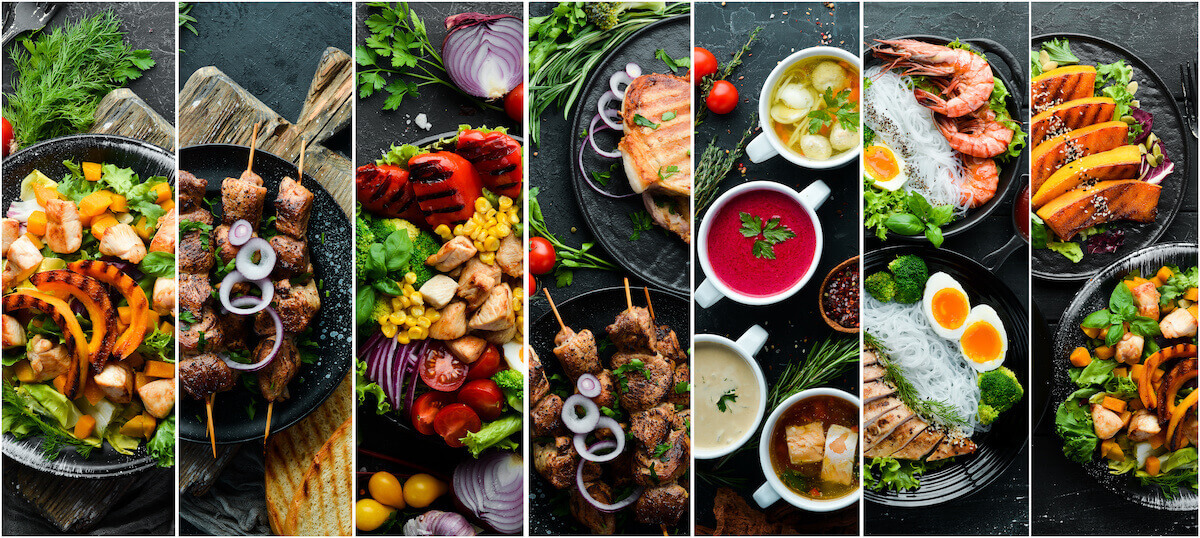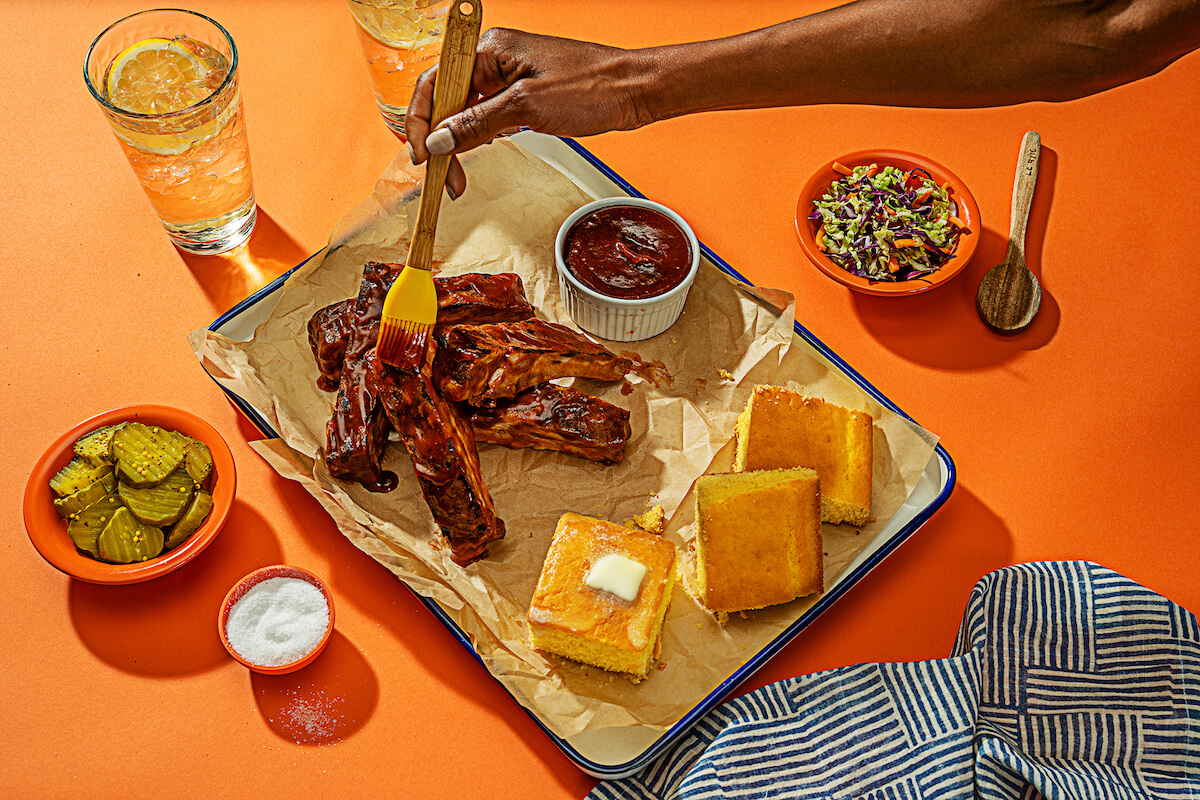Prix fixe menu: How to build it, say it, and define it
It’s not too late to jump into the world of prix fixe menus. Maybe you’re a self-taught chef and the concept is intimidating, or you’ve just rebranded your restaurant and you want something special to draw diners in. Or maybe you need to cut down on food costs or you’re prepping for a more upscale holiday like Mother’s Day.
A prix fixe menu can be an excellent choice for restaurants of all varieties—from the lowest brow to the highest. It’s already a popular concept throughout the world, and you’re probably already familiar with it even if your French isn’t up to snuff.
So, should you offer prix fixe menus? How can they benefit your restaurant? What are the expectations around this menu type? Let’s explore below.

What is prix fixe?
Prix fixe (pronounced pree-fiks or PRE-fix) is the French term for “set price.” The literal translation from French is fixed price, but the term and its etymology can feel intimidating because the term isn’t in English. You may see it called prefix or pre-fixed, just because that’s how you pronounce it. But the correct spelling is prix fixe.
Prix fixe is an alternative to ordering a la carte—or picking specific menu items. Instead, customers order within a set of guidelines for their meal. These guidelines usually include an appetizer, salad or soup, an entrée/main course, a dessert, and possibly a drink. Realistically, it’s whatever the restaurant determines to be a full meal.
A prix fixe menu has been a staple of the restaurant industry since its earliest days. You could go back to ancient Rome or China and find similar examples. Prix fixe menus are a staple of diner behavior worldwide, including the U.S. It doesn’t have to be fancy food—at fast-food restaurants, a humble version of prix fixe can appear in the form of a combo, like the classic burger, fries, and a Coke. (Not exactly the spitting image of prix fixe, but hey, work with what you’ve got!)
A classic steakhouse prix fixe example would be a salad or soup, steak, side, and dessert. Imagine a seasonal green salad, ribeye, potatoes au gratin, and house-made chocolate mousse. Something like that.
Bear in mind the concept of a prix fixe menu can vary between restaurants. Restaurants may choose to offer more than one prix fixe set. Restaurant owners can choose to limit offerings to a well-defined set, whereas others may decide to allow customers to swap some items between prix fixe menus. Restaurants can offer a few different prix fixe sets to suit preferences and work around food allergies or dietary restrictions.
While prix fixe menus are popular for special occasions like Valentine’s Day, Mother’s Day, or other holidays, there’s absolutely no reason for restaurants to hold back on set menu offers.
Prix fixe vs. a la carte
The primary difference between a prix fixe menu and a la carte ordering is that for prix fixe, a diner’s meal is set for them from appetizers through dessert. They don’t make any choices besides opting into the prix fixe meal. A la carte ordering, on the other hand, is what you do in any old restaurant on any day—customers pick exactly what they want from the full menu.
Whereas a la carte dining means diners choose each individual selection of a meal, each course is paired together in a prix fixe menu. This can allow chefs to show off their pairing capabilities. Vegetarian prix fixe options can be matched to ensure adequate protein balance, for example. Similarly, chefs can produce a set menu suited towards a lighter appetite, like fresh fish and vegetables, or to a hungrier customer, like red meat and potatoes.
As mentioned above, some restaurants may choose to let customers pick between a few options while maintaining the set price. If there are three prix fixe options, for example, a restaurant may allow customers to change out sides or soups for an option from another selection but not from the full menu.
What are the benefits of a fixed price menu?

When a restaurant offers multiple courses under the same umbrella, it saves restaurant owners time and money by reducing their overhead costs. It also provides customers with simple choices that are guaranteed to be good picks.
Cost reduction
A prix fixe menu saves a restaurant owner money, especially on ingredients. By limiting menu choices, the owner can limit their spending to fresh, in-season, and high-quality ingredients. In addition to reducing spoilage, this practice often produces superior results to a la carte dining: The dishes that go together on a prix fixe menu are intended to complement each other.
Simplifying choices
Similarly, a prix fixe menu reduces the risk of overwhelming a customer with an extensive a la carte menu. Choices are laid out for the customer, with the menu usually prepared by the chef to make everyone’s lives simpler. Best of all, a prix fixe menu can be rotated based on seasons, food availability, or even the day of the week.
Seasonable flexibility
One significant pro of a prix fixe menu is you can take advantage of seasonably available food specific to your region. A New Mexico-based restaurant, for example, may base a menu upon the availability of hatch chilies, or a seafood restaurant can base their menu around seasonal catches. You can use your imagination to customize the idea to your neck of the woods.
Really, this is one of the many trends diners follow these days: Local, fresh, and innovative. That doesn’t mean you need to reinvent the wheel or the bouillabaisse, but it does mean paying attention to your location and the season.
Menu design flair
A prix fixe menu also allows for showcasing this option in menu design. Placing set price full meals prominently on the menu can help sales and can also help steer diners towards an experience they’ll appreciate.
Prix fixe menu: Just for fine dining?

Don’t let the name fool you: Prix fixe menus are not just for fine dining restaurants, though they certainly belong there. Instead, prix fixe menus should simply represent a multi-course meal all covered by one cost to help simplify a diner’s decisions.
So, should prix fixe always be called prix fixe? Certainly not. Using the term “prix fixe” at a Mexican restaurant might be confusing. Instead, referring to your option as a “set price menu” will be much more approachable and understandable from a customer’s point of view.
In the same vein, a prix fixe menu doesn’t need to be relegated to more trend-forward cities like New York. After all, combos are essentially a facet of restaurants everywhere whether they realize it or not. But if you’re a sit-down restaurant, calling something a combo cheapens the appearance of your restaurant. It’s fine to keep the idea and ditch the term. If you think your customers are comfortable with French terminology, keep “prix fixe.” If not, go with English.
When to use a prix fixe menu

Many restaurants relegate the prix fixe menu to especially busy days, including New Year’s Eve, to minimize back-of-house staff confusion. But a prix fixe meal is a good idea any time of year—especially when you’ve got access to excellent quality and seasonally available food. Wintertime is no exception: Winter dining offers a restaurant many possibilities. Prix fixe menus can also be available for takeout, much to the horror of real French chefs.
This can lead to many marketing opportunities, including offering a tasting menu, a traditional three-course offering like a soup, main course, and dessert, or simply a lucky draw at the wholesaler. Fresh swordfish on offer? Score! Make it a prix fixe offer with two other courses and a glass of wine and stick it on your specials board.
Although a set menu may seem limited at first, a prix fixe scenario actually offers significant room for a restaurant and its chefs to play around with their abilities and offer something unique to customers.
Rather than limiting choices, it helps set customer expectations and often amplifies them. You may be well aware of the cereal conundrum, in which there are so many breakfast cereals available in the aisle it’s hard to choose. A prix menu avoids just that by limiting a customer’s choices to something you know will be delicious. Guide them by the hand to quality food and they’ll love you.
Prix fixe FAQs for restaurant owners

Thinking of debuting your first prix fixe? Here are some common questions chefs and managers ask when working on their preset menus.
Should a prix fixe menu be always available?
Choosing whether or not to always offer a set price is wholly up to restaurant management, but it can be a good decision for several reasons.
First, restaurants don’t know in advance what days are important to customers. Birthdays, anniversaries, and so on, happen all the time, and restaurants should be able to provide a special experience for customers whenever possible. Imagine a first date scenario: Wouldn’t it be best for customers to be able to focus on each other rather than on deciding what to eat?
Second, a prix fixe menu does not have to take away from your regular offerings. It can simply help organize a meal for a customer and lead them to the promised land of good eats. Consider your regular choices and ask your chef how they can be best paired together to create a prix fixe dinner. Nothing else needs to change, really.
There’s no reason prix fixe menus shouldn’t be available for takeout, either. If you already offer takeout, making a set price menu available for takeout is fairly straightforward.
What’s the difference between prix fixe and table d’hote?
The French concept of “table d’hôte” offers customers a range of choices for their meal within an established framework—a longstanding tradition in French dining.
The meanings are very similar and often interchangeable. Table d’hote would be appropriate in a French or fine dining restaurant, while prix fixe can be used in any restaurant that would prefer not to use the term “combo.”
Should you offer substitutions for prix fixe?
Typically, prix fixe menus are the opposite of substitutions, but many restaurants are able to work in substitutions for sides or desserts, for example. So, if a customer wants the prix fixe option #2 with chicken but wants the side dish from the #1 beef option, restaurants should be able to accommodate the choice as long as it doesn’t set prices out of whack.
Do you add drinks to a prix fixe menu?
Prix fixe menus often pair drinks with their set menu, as opposed to customers choosing their own from the restaurant menu. Many diners don’t know what wine they want, so creating pairings can help make your dining establishment look like it’s run by geniuses.
Do staff need to be specially trained for prix fixe menus?
Restaurants should acquaint their servers with the concept of a prix fixe menu and the order in which dishes should be served. Imagine a classic three- or four-course meal, for example. Appetizers for all diners should arrive at the same time, as should entrees, desserts, and beverages.
Do prix fixe menus include a tip?
This question is up to the establishment, but generally, yes, prix fixe menus include a tip. This is often included in the form of a service charge and is indicated in the full price. Restaurants that intend to do this should note on their menu that a gratuity fee is included in the price. Fine dining restaurants should aim for round numbers, since anything ending in “.99” may appear cheap to customers.
Additionally, it’s not wise to surprise customers with extra charges in what you’ve presented as a full set price. Part of the deal of a set price menu is that a customer knows exactly what they’ll spend at the end of the night. For the same reason, it’s wise to include tax in the number as well.
Yelp and prix fixe: A done deal
A prix fixe menu doesn’t need to replace your regular menu, such as the menu customers can find on your Yelp listing. Rather, it gives customers extra incentive to visit your restaurant for something special and for your chefs to present their abilities to the community.
If you’re looking for a way to integrate prix fixe options into your restaurant, consider how Yelp’s front-of-house solutions can help. A great way to promote your restaurants, whether for special days or simply special menus, is to advertise with Yelp Ads. It pairs super well with Yelp Guest Manager: Restaurants that use Guest Manager paired with Yelp Ads experience 87% more traffic on their Yelp business page.
So you can tap into your chef’s creativity and pair it with the best restaurant tools out there to get customers in the door and keep them happy. Want to see how Guest Manager can work for you? We’d love it if you reach out for a free demo.